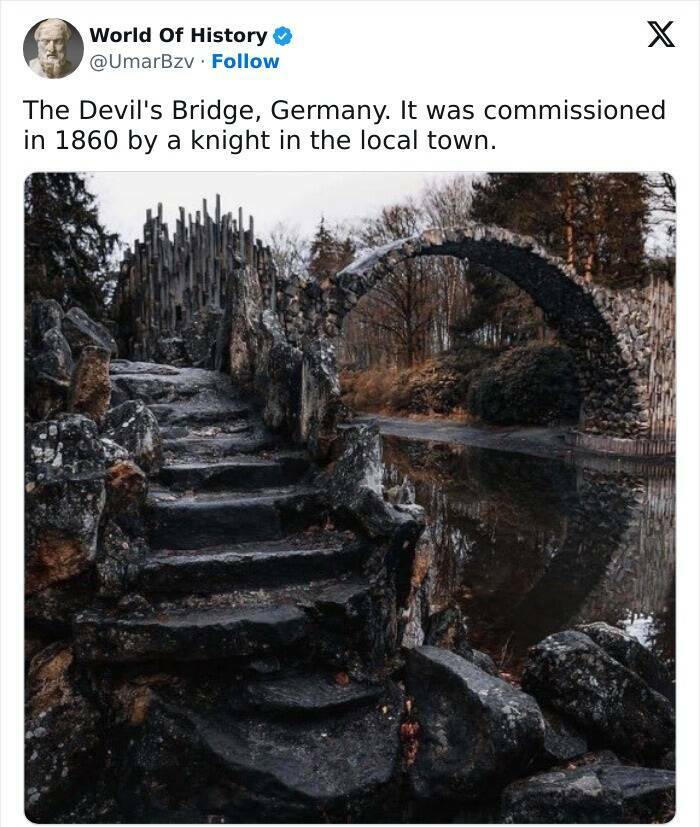6.

Howard 2 year s ago
#21 is the "Rakotzbrücke", which neither is in "the local town" nor "commisioned by a knight". I'm not even sure it acts as a proper bridge or simply as a landmark (which then probably would not be accessible by foot).
Instead, it's part of the landscape gardening and was commissioned by the owner of the manor, which doesn't make him a "knight".
Also, I'm not sure if it's "historical" or simply "old".
There are so many better examples of "devils bridges" in the German-speaking parts of the world, not sure why they selected this particular one.
Instead, it's part of the landscape gardening and was commissioned by the owner of the manor, which doesn't make him a "knight".
Also, I'm not sure if it's "historical" or simply "old".
There are so many better examples of "devils bridges" in the German-speaking parts of the world, not sure why they selected this particular one.






Those are not spoons. Those are sponges mounted on a stick to wipe your dirty spot. Evidence indicates they were drenched in vinegar.
your comment is boring
Instead, it's part of the landscape gardening and was commissioned by the owner of the manor, which doesn't make him a "knight".
Also, I'm not sure if it's "historical" or simply "old".
There are so many better examples of "devils bridges" in the German-speaking parts of the world, not sure why they selected this particular one.